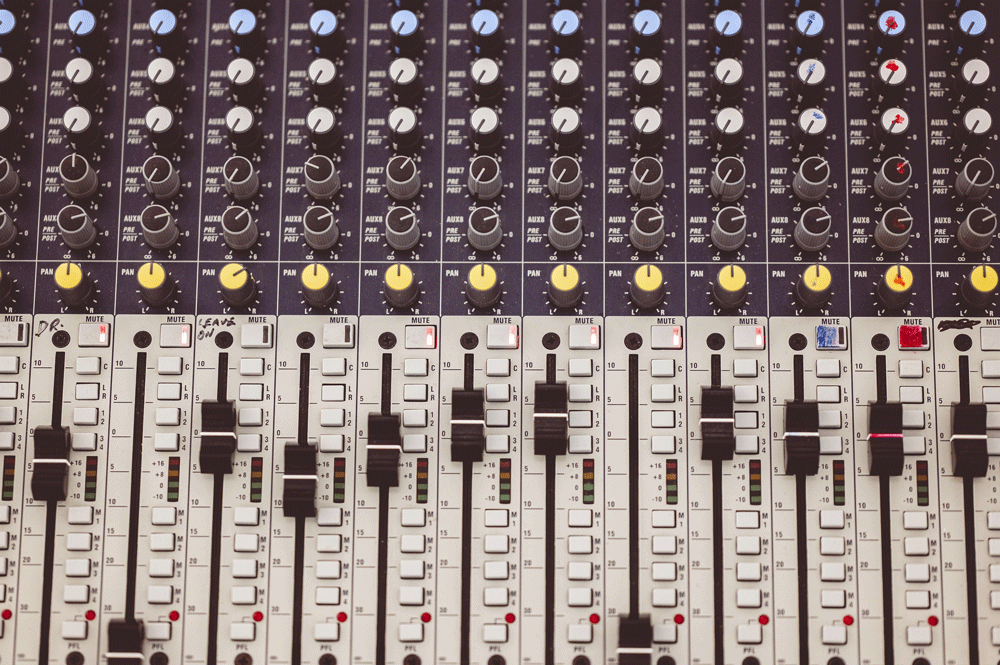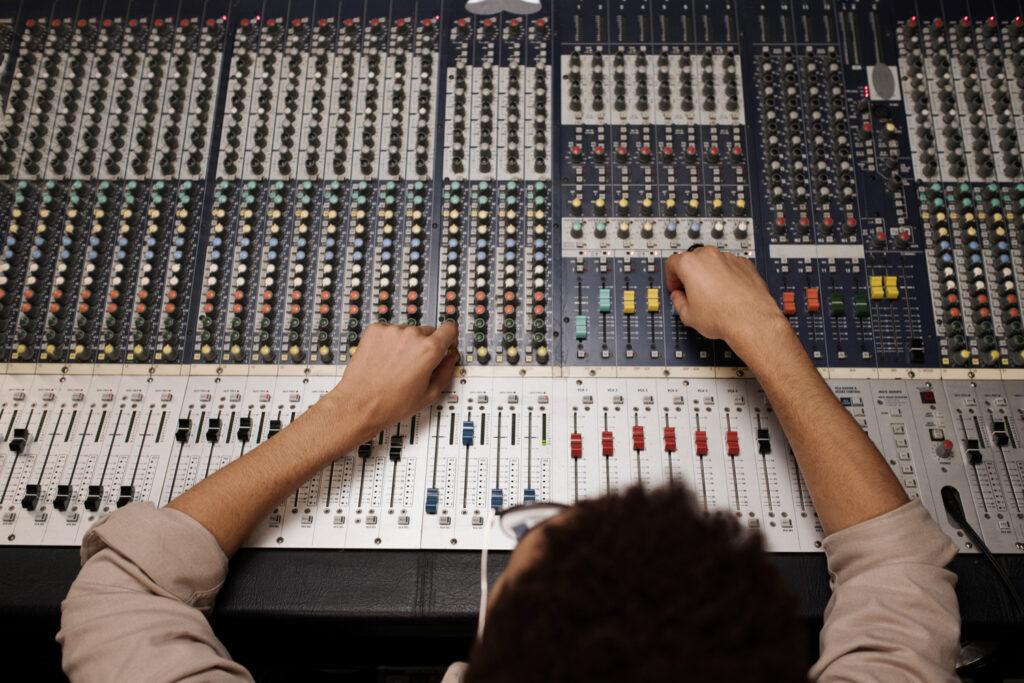The mastering process in general is the same for all music because mastering is standardization. However, as each genre and style has its own peculiarities and different features, the engineer has to apply different processing and aim for different sound qualities for each genre.
The main difficulty in pop mastering
 It may seem that mastering pop music is easy because it’s not as demanding and specific as other genres can be, but this is not that simple.
It may seem that mastering pop music is easy because it’s not as demanding and specific as other genres can be, but this is not that simple.
The truth is that mastering pop music is complicated because of its extreme diversity. Pop music varies greatly, from slow ballads to intense dance beats. And you’ll have to choose different audio processing for every song.
To master pop music, an engineer must know virtually all genres and styles, and choose the correct approach to mastering every song. The engineer must be highly professional to master pop mixes well.
Not only are there a lot of different styles inside the genre, but even within one pop artist’s work, many styles can be presented. For example, let’s look at Katy Perry. Her songs are diverse, from soft tunes to hip hop with punchy 808s. So, each of her tracks was mixed and mastered differently to support and enhance its unique idea in the best way possible.
The engineer who masters top-chart pop music must be professional in virtually all genres to be able to choose the correct approach for each song.
Determine the needed industry parameters for the genre.
So, what is the first step to mastering pop music? First of all, mastering is standardization. Your master records must have the needed loudness level, dynamic range, frequency spectrum, and so on. That’s why you’ll want to become a specialist in today’s pop industry requirements and always stay open to the changes that the industry introduces.
Stay informed: study top songs on the billboard
The music world develops rapidly, and the standard for top songs changes. The trick to staying up-to-date in the industry is to always keep track of Billboard’s top songs.
If you want to act as a professional, you can listen to the top pop hits, study them, and make a chart of the parameters you need, estimate the average numbers. First of all, there will be loudness parameters like LUFS, RMS, peak levels, and also dynamic range, frequency spectrum, etc.
At our Major Mixing studio, we regularly analyze the Billboard Top 100 songs and check how they get normalized on different streaming services. This information is crucial to know, and by using it, we can mix tracks and create master records that can successfully compete in the industry.
As for pop music, today we see tons of super loud masters, the average perceived volume is -8 LUFS and it looks like this level will stay like this for some time.
Mastering each song, follow your reference tracks
Of course, you may not want to spend your time doing research and studying the main parameters of the top 100 hits on billboards. This is a very useful approach if you do a lot of mixing and mastering for different songs.
However, you will surely have to study the tracks you have picked as references and use them to shape your pop music. References will be the reason you choose certain sound qualities, so you have to pick them very carefully.
We’ll share here some rules our mastering engineers use and advise our customers to follow when picking a record as a reference.
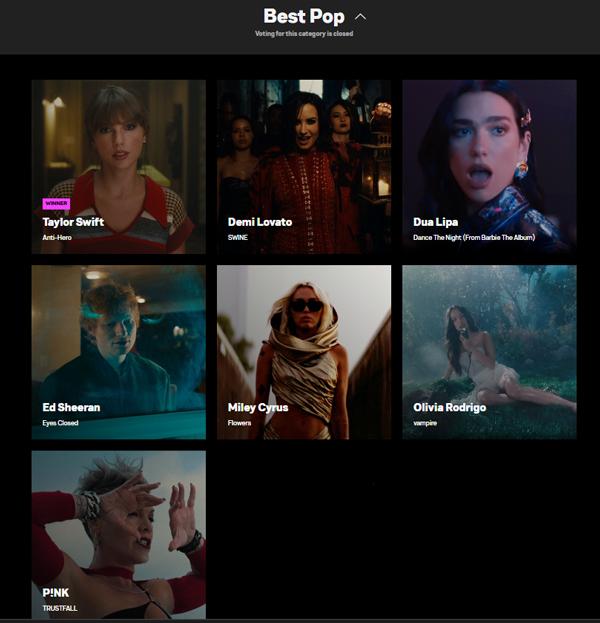 Rules for picking reference songs
Rules for picking reference songs
- Always choose a song that became popular within the last 2 years.
- The closer your reference track is to the top of the charts, the better. The best way to get up-to-date sound qualities is to stay close to today’s winning sound.
- Listen to it carefully and take your time. The reference must resemble the sound you want in your master. The worst thing is to realize in the middle of the work that you have chosen the wrong reference track; then you’ll have to start over.
- Instead of one reference track, it makes sense to choose several. For example, if you love the bass and drums sound in the first reference, the vocal will be exactly what you want in the second reference, and so on. And you may achieve the result you want in one song by using several references.
To receive a proper-sounding pop master, you will make your mix closely follow the reference.
You’ll have to listen to the reference track many times and always tune your ear to the reference track, not to your recording. This is how you’ll hear and determine the way for processing.
You’ll build the balance, stereo width, the whole stereo image, dynamic range, distortion, loudness, and other parameters according to the reference track.
What are the two types of mastering for a pop mix?
Pop music is extremely diverse in styles, and that’s why here it all depends on the qualities of each particular pop record. Because of the diversity of the songs, you’ll have to choose the types of sound and tools you use.
There are analog and digital mastering options, and you’ll have to determine what your sound needs and make a choice.
Analog mastering is done using analog hardware, while digital or in-the-box processing is done inside a digital audio workstation, inside a computer.
While mastering other genres, like classic rock and indie songs, for example, engineers often use a fair amount of harmonic distortion, sometimes applying vinyl or crispy effects. That’s why for certain genres there is a preferred type of processing, either analog or digital. For example, a jazz composition will definitely benefit from analog mastering, while electronic music requires only digital clarity and sound qualities.
And even though for pop masters you’ll generally want to stay away from classic analog warmth, for some tracks you’ll make an exception, as we said earlier, for pop music it all depends on a song.
Generally, a song that includes live instruments will more often benefit from analog effects than a pop master with an energetic 808 bass. Read more about it in our article Analog Mastering.
How a pop master record will benefit from digital processing
In-the-box mixing and mastering allow us to enjoy extremely accurate digital processing.
We can clean the sound, edit the pitch, and apply very precise sound editing. Digital mastering allows for the creation of a sound that has no unwanted distortion, artifacts, or harmonics.
This clarity is the main feature of most pop songs today, but again, you need to look at each track individually.
How analog gear changes the final mix
A recording that goes through analog gear acquires warmth and depth; it gets a special “analog sound”. Moreover, each piece of equipment changes the track in its own unique way.
A lot of analog pieces of hardware have been made into plugins that can simulate their effects digitally. This means that if your pop master record has to contain analog warmth and harmonic distortion, you don’t necessarily have to do analog mastering.
However, there still exist a lot of super-famous pieces of analog audio equipment that don’t have the corresponding plugins. Lots of effects that can be obtained by pushing the pop master through pieces of hardware can’t be obtained inside a computer yet. For this reason, analog mastering remains a necessary part of creating a great-sounding master for some pop songs.
The smartest option for analog pop sound is hybrid mastering
The perfect solution we often use at our Major Mixing studio is hybrid mastering.
Hybrid mastering includes both analog and digital processing and allows us to keep all the benefits of each in one mastering session.
The analog gears that have the corresponding plugins can be emulated inside the computer in a DAW. At the same time, if we need to use a piece of hardware for its unique harmonic distortion, we can do that as well, and add harmonics that only this equipment can create.
We tell about this type of working with audio in our blog post on Hybrid Mixing .
Mastering chain for mastering a pop mix
A loud but exact and clear sound is the trademark of a great pop master today. Although many characteristics will greatly depend on a particular song and style within the genre, we’ll try to give some general advice on how to apply the main processing steps for creating a great pop master.
Let’s take a look at how we use particular processing at our studio for working with pop mixes.
Compression
 During mastering a pop mix, our mastering engineer uses different techniques to make the song as clear as possible. The amount of unwanted distortion must be minimized.
During mastering a pop mix, our mastering engineer uses different techniques to make the song as clear as possible. The amount of unwanted distortion must be minimized.
The compressors we use for our pop hits are gentle compressors like Elysia or Manley Vari MU compressors, they keep the maximum clear sound.
Another important tip for mixing pop music is to reduce the dynamic range gradually, using a sequence of slight compression instead of using one compressor with excessive compression settings. For example, to achieve a gain reduction of 3 dB, you can implement three compressors in a row with a gain reduction of 1 dB each. This way, the compression effect will be more accurate, and you’ll get a better-sounding master. There will be less distortion, and you’ll make the sound louder while still preserving the clarity.
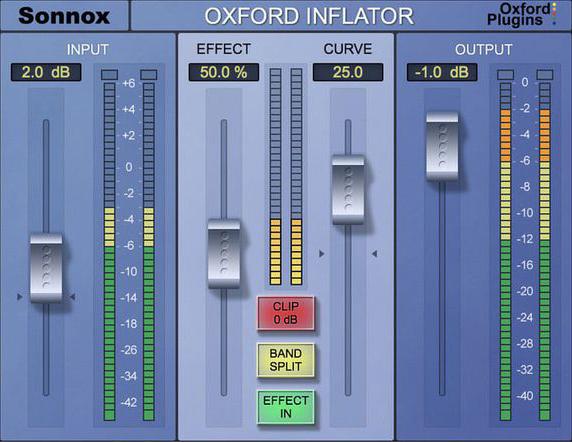 Soft clipping
Soft clipping
After that, we apply some soft clipping with the Oxford Inflator, clipping on input to reduce the dynamic range a bit more.
Additionally, we use the Waveshaper algorithm here, which also helps increase the perceived loudness of the pop mix but introduces minimal distortion.
Limiter
In the end, we use our favorite limiter, Invisible Limiter. Again, this is one of the tools that bring in minimum distortion and is perfect for pop music mastering.
EQ
Among equalizers, we choose those that don’t add extra color to the sound, like, for example, Manley Massive Passive EQ or FabFilter Pro-Q. You may adjust the phase modes and pick the setting that gives the clearest sound.
What should I pay close attention to during pop mastering?
What are particular aspects our professional engineers would monitor closely while mixing pop artists’ tracks?
There are a lot of things you look into when you do mastering. However, keep an eye on the loudness, distortion, balance, and brightness of the music.
Loudness
You should compare the dynamic range of your master with your reference track and master to keep up with the necessary parameters for perceived loudness.
Distortion
Keep your pop master free from unwanted distortion and damaged sound. Listen carefully, the sound must be perfectly clear for the pop hits that are more on the EDM and hip-hop side of the group.
For classic ones, however, with live instruments and naturally-sounding vocals, you may add harmonics and a fair amount of analog distortion.
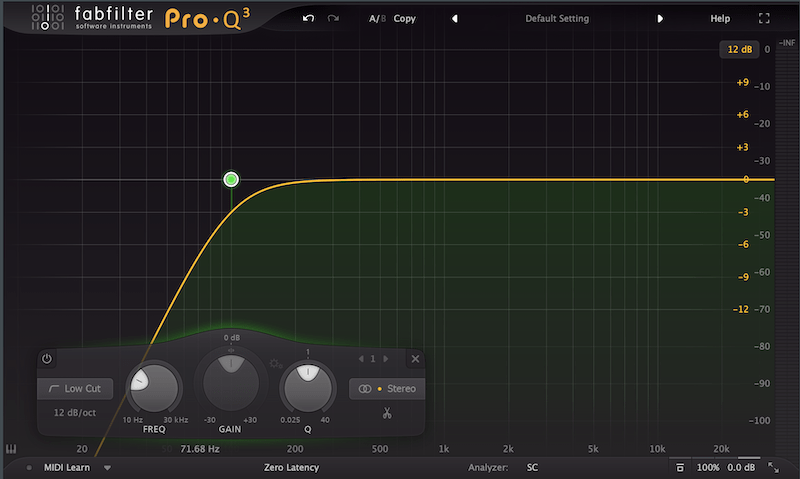 Balance
Balance
All of the elements in your pop record should be balanced, cohesive, and well-glued together.
The peculiarity and challenge of creating pop music is that this genre is the one that is played the most on low-quality, consumer-level playback equipment.
Your pop master will be played through your car stereo, on a cellphone or laptop. That’s why, for pop hits especially, we make sure that every element cuts through powerfully enough. The audience should be able to hear every detail, even through consumer-rate speakers.
So, for this purpose, we create a loud master, the dynamic range is reduced with excessive compression and the stereo image has to be built very much mono-compatible.
Brightness
Compare the frequency spectrum of the song with the reference track. Use a high-pass filter and other tools when necessary to correct it.
A great-sounding master record in pop music is usually bright, so adjust the frequency response corresponding to your reference chart-toppers.
How does loudness normalization affect mastering pop music?
Loudness normalization on streaming platforms is performed according to specific algorithms. When you upload your song to a streaming service like Apple Music, Spotify, or even YouTube, your music gets converted and normalized to the platform’s integrated LUFS standard. For example, it’s -14 LUFS for Spotify or -16 LUFS for Apple Music, and so on.
With the introduction of loudness normalization, the loudness wars that used to be so persistent in the past are now losing their importance. Most of the songs that would compete to be super loud now have reached the maximum possible loudness for a brickwall shape.
At the same time, increasing perceived volume and reducing the dynamics in loud masters even more now can work as a downside for a song. How can this happen?
When streaming platforms normalize loudness so all of the songs are played with the same LUFS, a brickwalled super-loud pop masters will be turned down, while some dynamic ballads may appear with peaks rising higher and standing out more within the playlist.
While researching the needed parameters, check out how well your reference track stands out on the streaming services among other tracks.
For information, you may use loudness normalization analyzers like Loudness Penalty software to check how much your loud master will be turned down on streaming platforms.
It’s useful to keep track of all the platforms’ requirements regarding LUFS and True Peak, headroom levels, and check how your master sounds when brought down to this level.
The best way to master a pop song – trust Major Mixing
 In our studio, we constantly meet musicians who bring us their pop tracks to mix, master, and prepare for release. Our mixing and mastering engineers have huge experience mastering pop music and other genres using both digital and analog processing.
In our studio, we constantly meet musicians who bring us their pop tracks to mix, master, and prepare for release. Our mixing and mastering engineers have huge experience mastering pop music and other genres using both digital and analog processing.
Pop songs are extremely diverse in their styles and sound qualities. And although mastering is standardization in general, it’s a task for a professional mastering engineer to correctly choose the tools and types of processing for each future hit.
Mastering is not an expensive service, but musicians understand that it’s one of the most important steps in music production because it prepares the song for release. Mastering is also the last chance to spot and correct mistakes in the mix, which is why artists prefer to work with a professional and experienced mastering engineer even if they mix their work themselves.
Our experienced mastering engineers are here for you to check and master your songs professionally according to industry standards and to prepare your songs and albums for a successful release.
Contact us now, we are ready to help you grow your career in the music industry!






